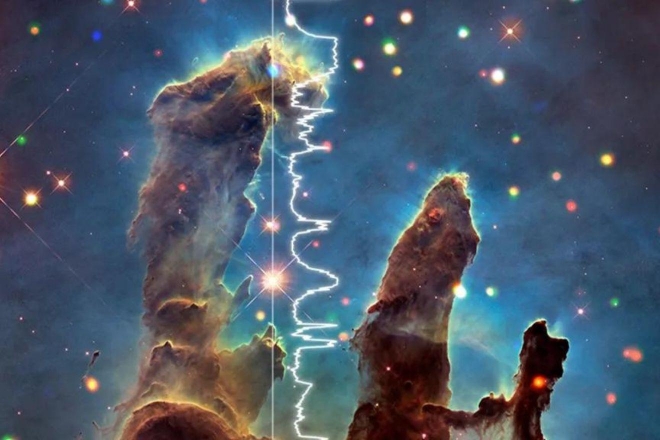NASA’s ‘Listen to the Universe’ showcases the celestial sounds of space
The documentary is paired with the release of three sonifications from a collapsed star, the Phantom Galaxy & the Jellyfish Nebula

Over the years NASA has been out in space collecting data and churning those sonifications into picturesque imagery and interesting sounds — more so with music. They’ve just released a brand-new documentary on their streaming platform NASA+ which is paired with the debut of three new sonifications.
‘Listen to the Universe’ dives deep into the behind-the-scenes moments where NASA translates their data from space into sound.
Although we’re provided with breathtaking celestial imagery and otherworldly acoustics that seem out of this world, the idea behind this project stemmed from creating an inclusive space experience, extending the wonders of the cosmos to those who are blind and visually impaired thus ensuring accessibility to everyone.
“Sonifications add a new dimension to stunning space imagery, and make those images accessible to the blind and low-vision community for the first time,” mentions Liz Landau, who leads multimedia efforts for NASA’s Astrophysics Division at NASA Headquarters, Washington.
The three released sonifications were captured through different telescopes by NASA, including the MSH 11-52, M74 and IC 443.
By definition, sonification is the process which NASA scientists use to translate data into celestial tones. Visuals-wise, digital signals from telescopes are churned into astounding astronomical imagery.
The first sonification is the MSH 11-52 which is a supernova (collapsed star) that has a cloud of “energised particles resembling the shape of a human hand”. As for the track, it does have mimic sounds that can be heard during the lunar new year from a Chinese Guzheng or synthesizer with firecrackers sparking off at the end.
The second is the M74, aka the Phantom Galaxy similar to the Milky Way. The sounds travel visually in a clockwise manner, mirroring the visual imagery where metallic plucked tones evoke the radiant clusters of stars that create an ethereal sound.
Read this next: NASA has captured the cosmic growlings of a black hole
Last is the IC 443 aka the Jellyfish Nebula, which has a sound that resembles the sounds from an ocean sea as it trickles down. Through the colours, a reflection of sounds can be heard as lower pitches are synonymous with the red colour tones, green is centred in the middle tones and blue shades are reflective of higher tones. And those water droplets or waves are the reflection of the stars that glimmer in the background.
Read this next: The sounds of Mother Nature: how natural frequencies are inspiring electronic music
All this data was retrieved from various telescopes such as NASA’s Chandra X-ray Observatory, NASA’s Imaging X-ray Polarimetry Explorer (IXPE), ground-based optical data, German ROSAT mission, radio data from NSF’s Very Large Array, optical data from the Digitized Sky Survey, NASA’s James Webb and the Hubble Space Telescopes.
In the past, NASA has provided the world with a few musical numbers, such as the one from the Butterfly Nebula which is a giant cloud of dust and gas, one from ocean colour and sediment data, and another from which created a whole electronic album from the sounds of black holes.
Watch the documentary on NASA+ here.
Via: NASA
Miki Kitasako is Mixmag Asia’s Social Media and Content Producer, follow her on LinkedIn.


